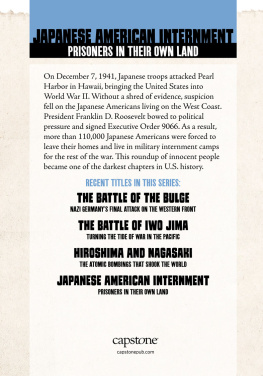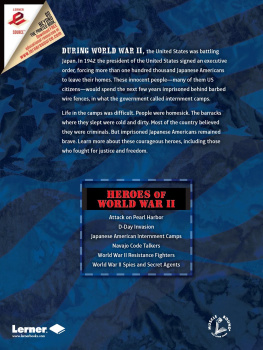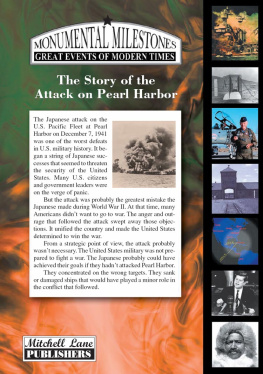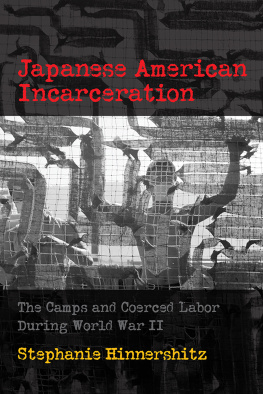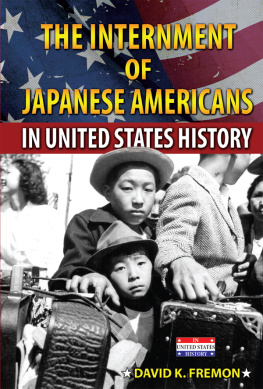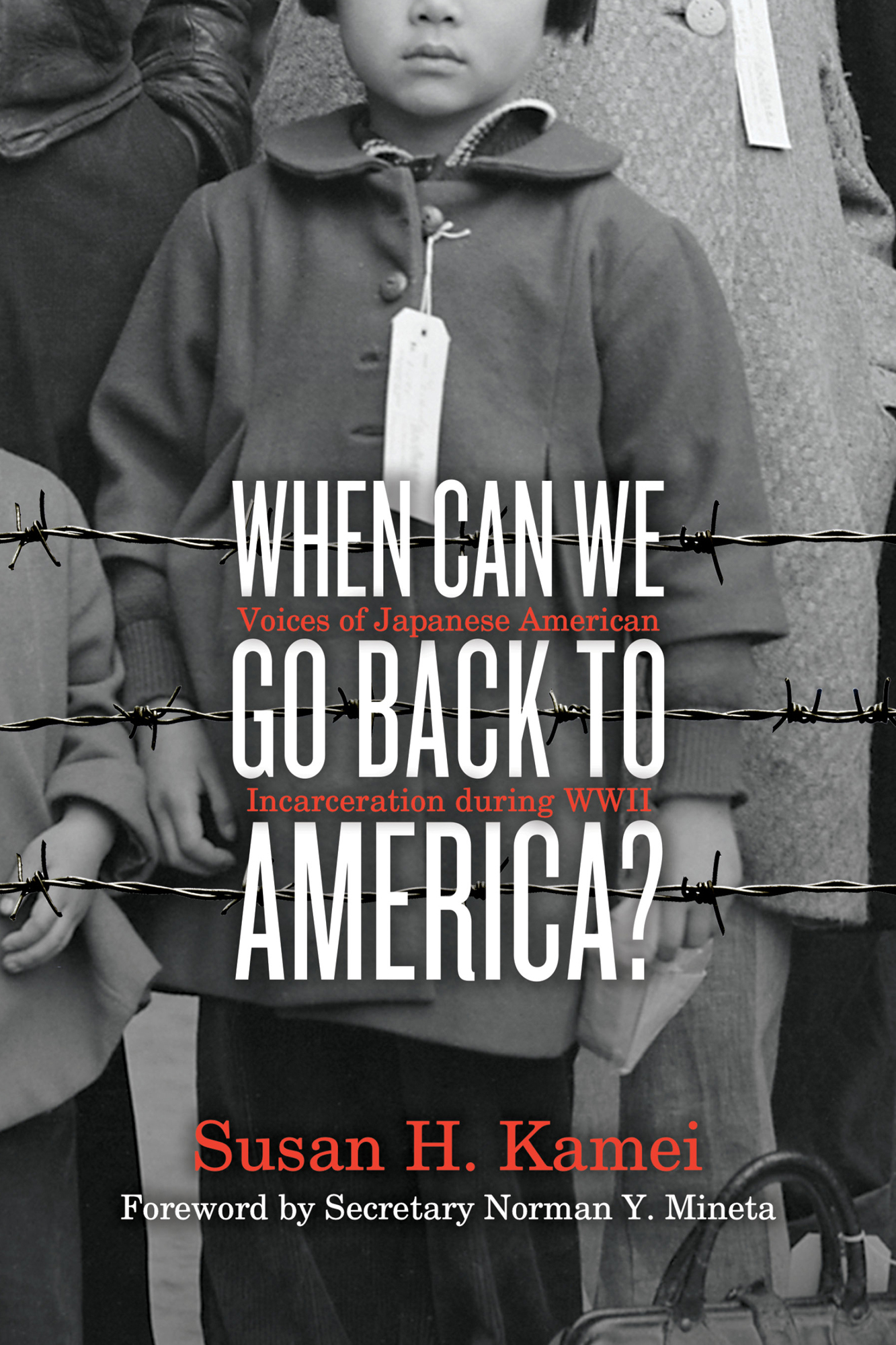CONTENTS
Guide
When Can We Go Back to America?
Voices of Japanese American Incarceration during WWII
Susan H. Kamei
Foreword by Secretary Norman Y. Mineta

An imprint of Simon & Schuster Childrens Publishing Division
1230 Avenue of the Americas, New York, New York 10020
www.SimonandSchuster.com
Compilation and text 2021 by Susan H. Kamei
Foreword 2021 by Norman Y. Mineta
Front jacket photograph courtesy of the National Archives
Back jacket photograph courtesy of the Bancroft Library
Jacket design by Greg Stadnyk 2021 by Simon & Schuster, Inc.
All rights reserved, including the right of reproduction in whole or in part in any form.
SIMON & SCHUSTER BOOKS FOR YOUNG READERS and related marks are trademarks of Simon & Schuster, Inc.
For information about special discounts for bulk purchases, please contact
Simon & Schuster Special Sales at 1-866-506-1949 or .
The Simon & Schuster Speakers Bureau can bring authors to your live event. For more information or to book an event, contact the Simon & Schuster Speakers Bureau at 1-866-248-3049 or visit our website at www.simonspeakers.com.
Interior design by Hilary Zarycky
Library of Congress Cataloging-in-Publication Data
Names: Kamei, Susan H., author. | Mineta, Norman Yoshio, 1931writer of foreword.
Title: When can we go back to America? : voices of Japanese American incarceration during World War II / Susan H. Kamei; foreword by Secretary Norman Y. Mineta.
Description: First edition. | New York : Simon & Schuster BFYR, [2021] | Includes bibliographical references and index. | Summary: A narrative history of Japanese Americans before, during, and after their World War II incarceration, including the voices and stories of over 130 individuals who lived through this episode, most of them as young adults Provided by publisher.
Identifiers: LCCN 2017052016 |
ISBN 9781481401449 (hardcover : alk. paper) | ISBN 9781481401463 (ebook)
Subjects: LCSH: Japanese AmericansEvacuation and relocation, 19421945ChildrenBiography. | World War, 19391945ChildrenUnited StatesBiography. | World War, 19391945Japanese AmericansChildren. | World War, 19391945Personal narratives.
Classification: LCC D769.8.A6 K36 2021 | DDC 940.53/17730923956dc23
LC record available at https://lccn.loc.gov/2017052016
In admiration and appreciation of all those of Japanese ancestry who suffered the consequences of the mass incarceration in the United States during World War II solely because of their race, and in hopes that my daughter, Akemi, and other descendants of the Issei and Nisei will remember their stories and will stand up for justice
Im always fearful that something like this might happen again. Not to me maybe, but just in the world. I see the neo-Nazis. That scares me to death. And these ultraconservatives I think they could do something like this again. Not necessarily to me but to whoever will be vulnerable. I think Im more fearful of racism since that whole experience.
Emi Amy Akiyama (Berger), female, Sansei, Berkeley, California, incarcerated age 8, Tanforan Assembly Center, Topaz Relocation Center
AUTHORS NOTE
M ost of the voices you will encounter in this book are from persons of Japanese ancestry who shared their thoughts and feelings in previously published works, oral histories, congressional testimonies, or works in the public domain. For consistency, I have identified these individuals by their first names (with nicknames in quotations), last names in bold, and maiden or married names in parentheses. The name in bold is the name by which they were known during their incarceration.
Since the gender of Japanese names might not be obvious to all readers, I have also identified the gender as male or female on the basis of their names. I have also included their generation identifier of Issei, Nisei, or Sansei. For persons who were incarcerated, I have provided their location at the time of forced removal, the name of their assigned assembly center (if they were sent to one), and the place or places of their long-term detention. I have included their age at the time they received the government order to leave the West Coast military zones. For those persons who were not incarcerated, I have included their location and age at the time Pearl Harbor was bombed.
I acknowledge each of those whose voice is included in this book as a contributor. Youll find key pieces of information and personal stories about the contributors in the section called Contributor Biographies. The Contributor Biography Sources are online under the Resources and Downloads tab at www.simonandschuster.net/books/When-Can-We-Go-Back-to-America/Susan-H-Kamei/9781481401449. I apologize in advance for any inaccuracies as a result of relying upon these sources, especially in those cases when I was not able to confirm the biographical information with the individual or a family member.
As you read this book, you will also come across direct quotes from certain articles and books. In those instances, a footnote is provided at the bottom of the page. More extensive information about the source, including page numbers, is included in the Chapter Sources at the back of the book.
For your reference, Issei (pronounced EE-SAY) refers to the first generation of immigrants who left Japan to make new lives in the United States. The Issei formed neighborhoods known as Little Tokyos and Nihonmachis, or Japantowns. Whether they were Buddhist or Christian, they celebrated traditional festivals and customs of Japan, their country of origin, and revered cultural values such as the primacy of family, social order, discipline, and honor. However, because of American naturalization laws against immigration on the basis of race, the Issei could not become US citizens, even though they might have been living in the United States, their adopted country, for decades. Of the approximately 120,000 persons of Japanese ancestry who were incarcerated, approximately 39,000 of them were Issei, or 33 percent.
The children of the Issei are called Nisei (pronounced NEE-SAY), which means second generation. Under the Fourteenth Amendment, persons born in the United States are citizens, so by virtue of their birth in the United States, the Nisei were American citizens. The Nisei grew up with a complicated perspective of being Japanese Americans in a preWorld War II society. Unlike their parents, who spoke little or no English, the Nisei were native English speakers; most had rudimentary Japanese-language skills, sufficient enough to communicate only with their parents and other Issei. Although their Issei parents wanted them to appreciate their Japanese heritage and be Japanese at home, the Nisei identified with being all-American. The Nisei constituted approximately 60 percent of those incarcerated, or about 72,000 of the 120,000 total. Almost half (45 percent) of the incarcerated Nisei were between five and nineteen years old; the majority were teenagers between the ages of fifteen and nineteen.
Sansei (pronounced SAN-SAY) means third generation, or the grandchildren of the Issei; Yonsei (pronounced YONE-SAY) means fourth generation, or the Isseis great-grandchildren. Today there are even Gosei (pronounced


